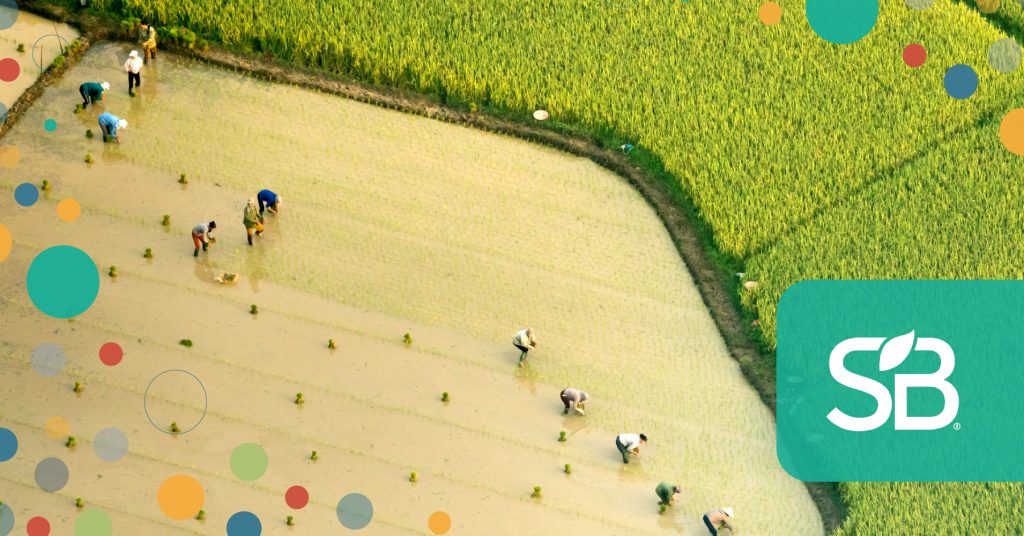Enhancing Photosynthesis Could Hold Key to Climate-Resilient Crops
6 min read
More than 3 billion years ago, on an Earth entirely covered with water,
photosynthesis first evolved in ancient bacteria. In the following many millions
of years, those bacteria evolved into plants — optimizing themselves along the
way for various environmental changes. This evolution was punctuated around 30
million years ago with the emergence of a newer, better way to photosynthesize.
While plants such as rice continued using an older form of photosynthesis
known as C3, others — including corn and
sorghum
— evolved to use a newer, more efficient version called C4.
There are now more than 8,000 C4 plant species — which grow particularly well in
hot, dry climates and are some of the most productive crop species in the world.
However, the vast majority of plants still run on C3 photosynthesis.
So, how did C4 plants come to be, and could C3 plants ever get a similar update?
As explored in a study published Wednesday in
Nature, scientists at
San Diego’s Salk Institute for Biological Studies
and collaborators at the University of Cambridge have
discovered a key step that C4 plants needed to take to evolve to become so
efficient at photosynthesizing — and how we could use this information to make
staple crops including rice, wheat and soybeans more productive and resilient
against our warming climate.
“Asking what makes C3 and C4 plants different is not just important from the
basic biological perspective of wanting to know why something evolved and how it
functions on the molecular level,” says Professor Joseph
Ecker — senior author of
the study and Salk International Council Chair in Genetics. “Answering this
question is a huge step toward understanding how we can make the most robust and
productive crops possible in the face of climate change and a growing global
population.”
Around 95 percent of plants use C3 photosynthesis, in which mesophyll cells —
green spongy cells that live inside leaves — turn light, water and carbon
dioxide (CO2) into plant-powering sugars. Despite its high prevalence, C3
photosynthesis has two major shortcomings:
-
20 percent of the time, oxygen is accidentally used instead of CO2 and must
be recycled — which slows down the process and wastes energy -
Pores on the leaf surface are open too frequently while waiting for CO2 to
enter, causing the plant to lose water and become more vulnerable to drought
and heat.
Fortunately, evolution has solved these issues with C4 photosynthesis. C4 plants
recruit bundle sheath cells, which normally serve as leaf vein support, to
photosynthesize alongside mesophyll cells. As a result, C4 plants eliminate
those oxygen-use mistakes to conserve energy and keep plant surface pores closed
more often to conserve water. The result is a 50 percent increase in
efficiency compared to C3 plants.
Can we upgrade our staple crops?
But on the molecular level, what made C3 plants turn into C4 plants? And could
scientists prompt C3 crops to become C4 crops?
To answer these questions, Salk scientists employed single-cell genomics
technology to look at the difference between C3 rice and C4 sorghum. While
previous methods were too imprecise to distinguish neighboring cells such as
mesophyll and bundle sheath cells, single-cell genomics allowed the team to
investigate the genetic and structural changes in each cell type from both
plants.
“We were surprised and excited to find that the difference between C3 and C4
plants is not the removal or addition of specific genes,” Ecker explains.
“Rather, the difference is on a regulatory level — which could make it easier
for us in the long run to turn on more efficient C4 photosynthesis in C3 crops.”
All cells within an organism contain the same genes, but which genes are
expressed at any given time is what determines each cell’s identity and
function. One way that gene expression can be modified is through the activity
of transcription factors. These proteins recognize and bind to small stretches
of DNA near the genes, called regulatory
elements. Once in position at the
regulatory element, a transcription factor can help turn the nearby genes “on”
or “off.”
When measuring gene expression in rice and sorghum plants, the scientists found
that a transcription factor family commonly referred to as
DOFs
were in charge of turning on the genes to make bundle sheath cells in both
species. They also noticed that DOFs were binding to the same regulatory element
in both species. However, in C4 sorghum plants, this regulatory element was not
only associated with bundle sheath identity genes—it was also turning on the
photosynthesis genes. That suggested that C4 plants had at some point tacked
ancestral regulatory elements for bundle sheath genes onto photosynthesis genes,
so that DOFs would turn on both sets of genes at the same time — which explains
how bundle sheath cells in C4 plants gained the ability to photosynthesize.
These experiments revealed that both C3 and C4 plants contain the necessary
genes and transcription factors required for the superior C4 photosynthesis
process — a promising discovery for scientists hoping to nudge C3 plants to use
C4 photosynthesis.
“Now we’ve got this blueprint for how different plants utilize the sun’s energy
to survive in different environments,” says Joseph
Swift, co-first author of
the study and a postdoctoral researcher in Ecker’s lab. “The ultimate goal is to
try to switch C4 photosynthesis on and, in turn, create more productive and
resilient crops for the future.”
From theory to practice
Next on the docket for the team is determining whether rice can be engineered to
use C4 photosynthesis rather than C3. This remains a long-term goal with
significant technical challenges that are being addressed by the C4 Rice
Project — a collaborative effort driven by researchers
from 7 institutions in 5 countries, working together to develop high-yielding
rice varieties for smallholder farmers.
When asked whether the proposed molecular changes have been applied to existing
crops — and if they’ve yielded the projected improvements on the ground,
had any other notable impacts on the plants (ex: on their nutritional profile or
their tolerance to pests), or could have any impact on biodiversity —
Swift told Sustainable Brands® (SB) that for now, the potential benefits
of the research are still theoretical, and that “practical crop implementation
will require further research and development, a long-term goal of initiatives
like the C4 Rice Project.”
“Our research is currently limited to understanding the regulatory mechanisms of
photosynthesis at the molecular level,” Ecker told SB. “If, in the future, we
can successfully implement C4-like photosynthesis in C3 crops, careful
consideration will be given to any potential ecological impacts — including
biodiversity. Collaboration with experts in plant ecology and biodiversity will
be crucial in these next stages to ensure any modifications are both safe and
beneficial for broader agricultural ecosystems.
“While the findings are promising and pave the way for future applications, they
remain part of ongoing basic research to understand the evolutionary mechanisms
behind photosynthesis,” he added. “Practical applications in crops will require
extensive testing and refinement in the years to come.”
In the short term, the findings will inform the Salk Harnessing Plants
Initiative’s mission to
create optimized crops that simultaneously fight and withstand the threat of
climate change.
Their single-cell genomics data has also been shared as a resource for
scientists around the world, quickly garnering excitement for its answers to
this long-standing mystery in evolution.
The work was supported by the C4 Rice Project and the Howard Hughes Medical
Institute.







